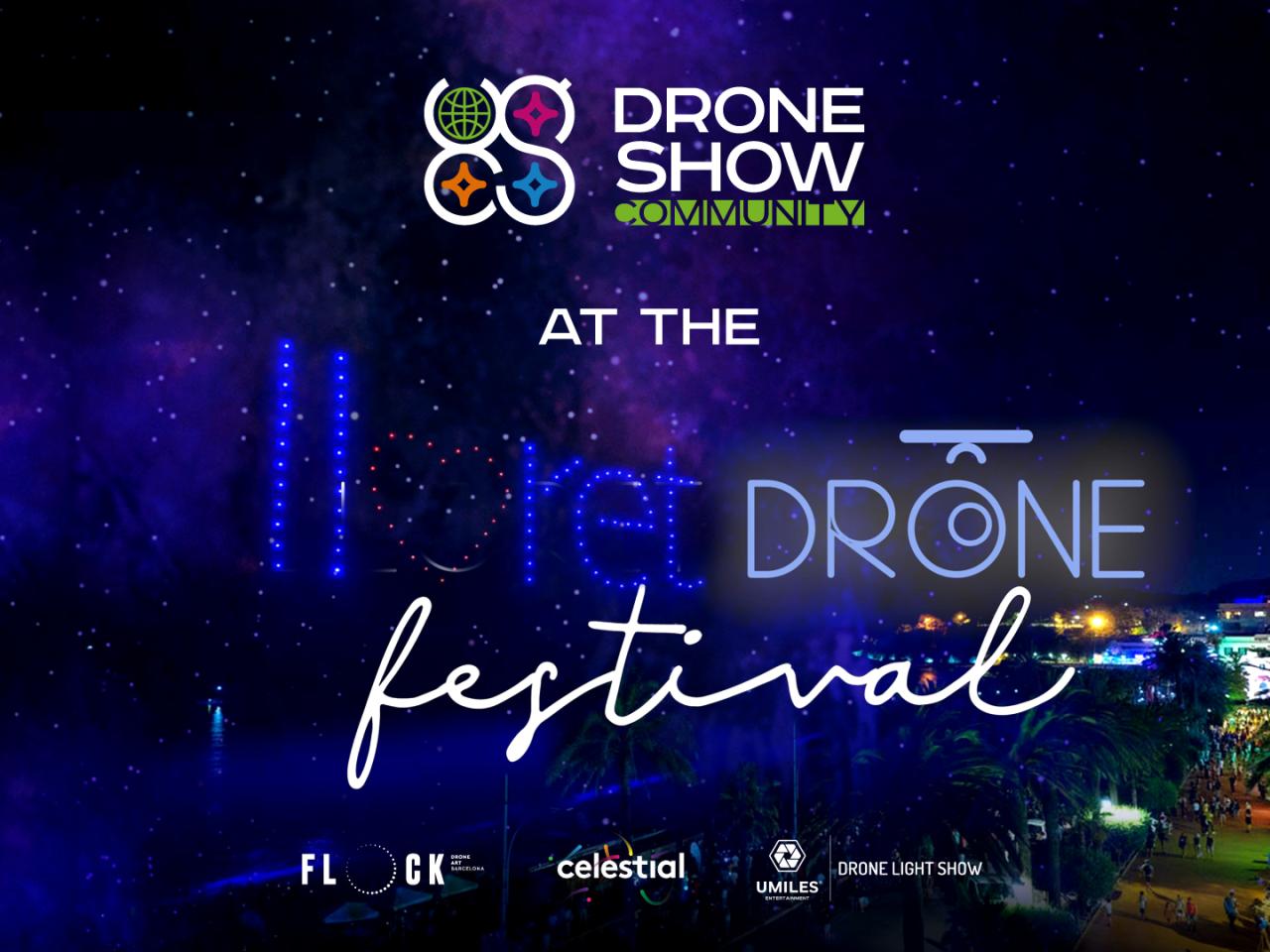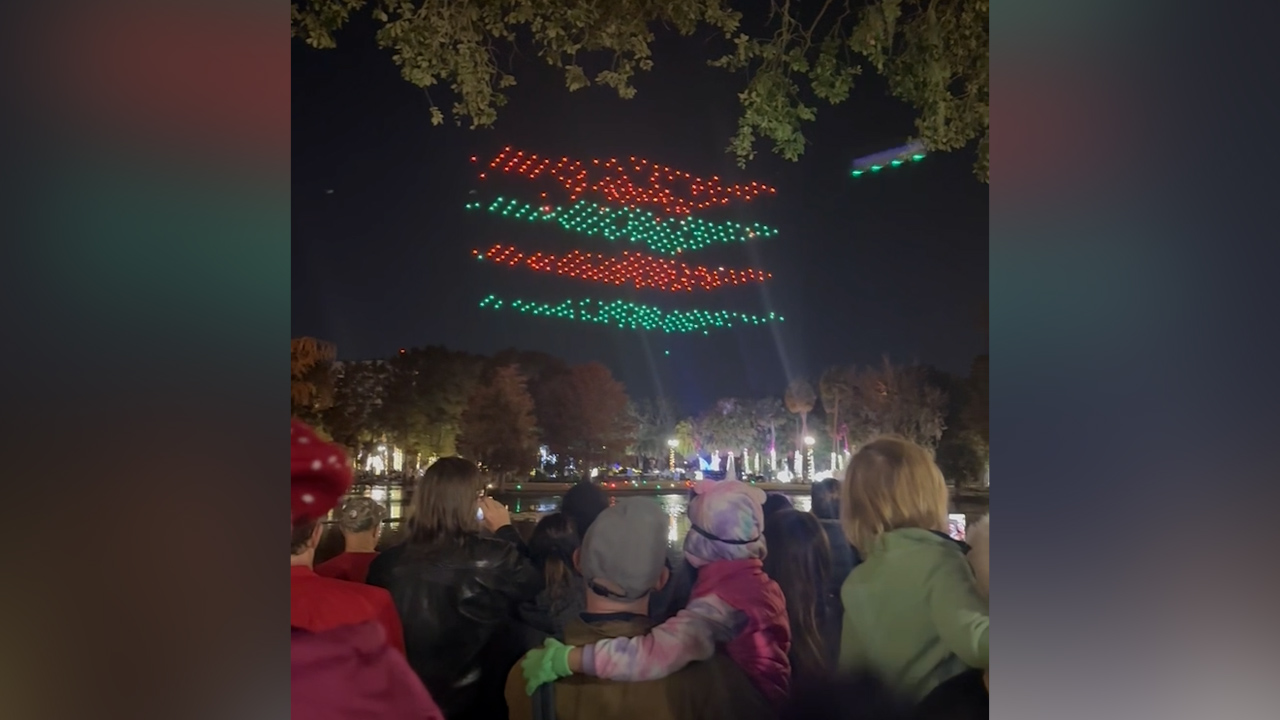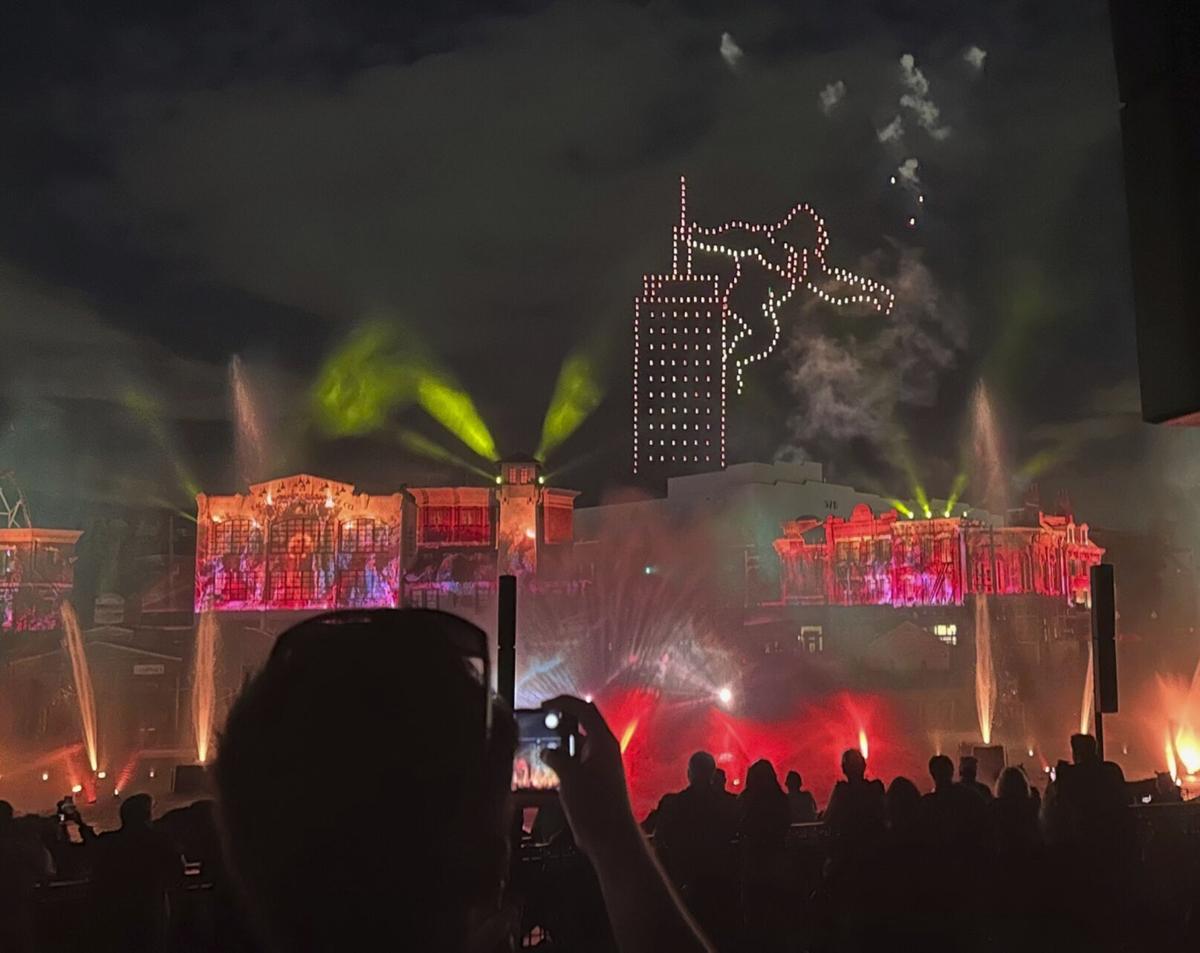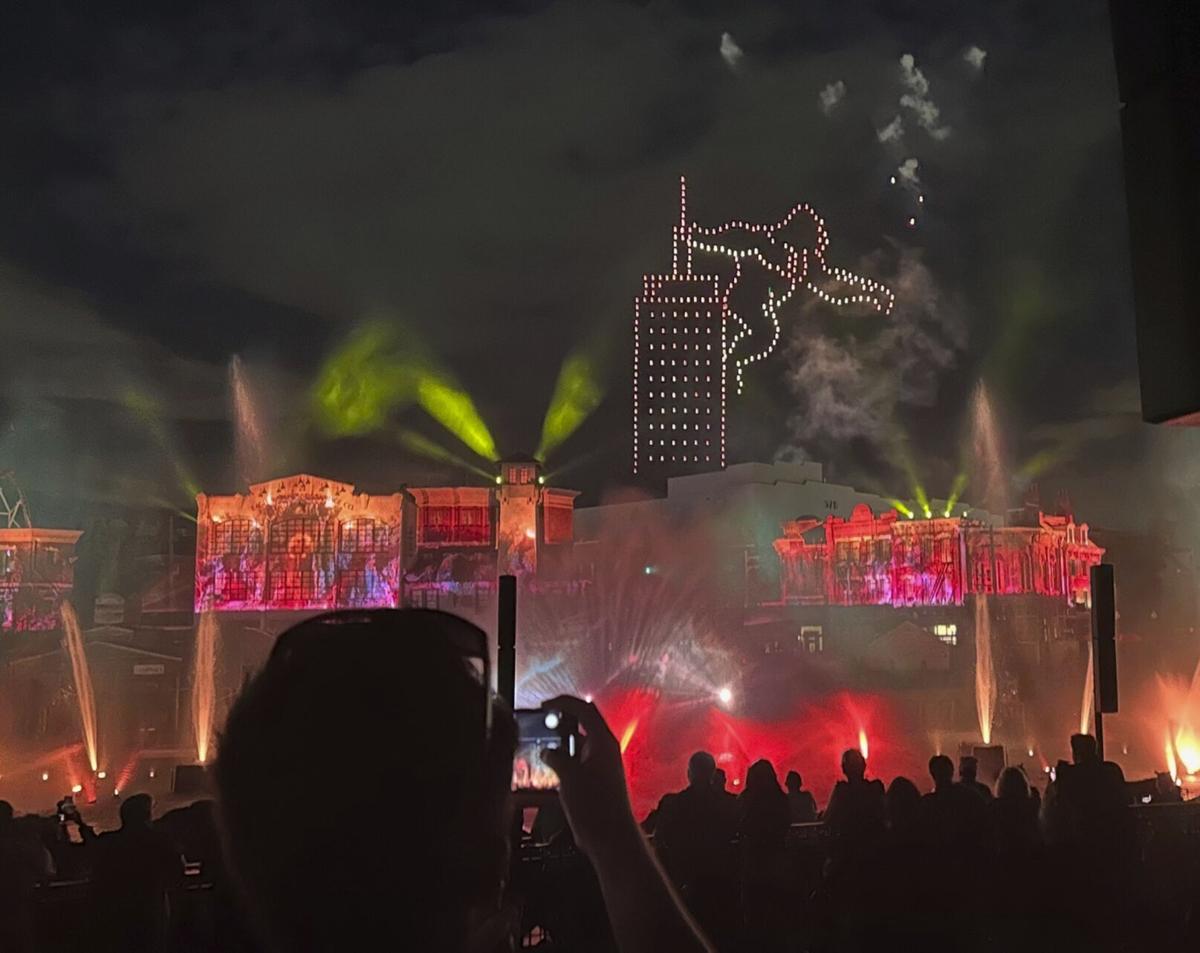Florida Drone Show: Imagine breathtaking aerial displays painting vibrant pictures across Florida’s stunning landscapes. This guide dives into the exciting world of drone shows in the Sunshine State, exploring everything from the permits and regulations to the technology and economic impact. We’ll cover popular locations, diverse show types, and crucial safety considerations, equipping you with a complete understanding of this captivating entertainment spectacle.
Florida drone shows are amazing, offering spectacular light displays choreographed to music. However, the potential for accidents is real, as highlighted by a recent incident; check out this news report on a drone crash in Paris to see the kind of things that can go wrong. Understanding these risks helps ensure safer and more impressive Florida drone shows in the future.
From the meticulous planning and execution to the awe-inspiring visual effects, we’ll unpack the complexities and intricacies involved in bringing these mesmerizing shows to life. Whether you’re a drone enthusiast, a potential show organizer, or simply curious about this innovative form of entertainment, this guide will illuminate the fascinating world of Florida drone shows.
Florida Drone Show Regulations and Permits
Navigating the regulatory landscape for drone shows in Florida requires understanding both federal and state guidelines. This section details the permitting process, relevant FAA regulations, and differences in requirements based on show scale.
Obtaining Permits for Drone Shows in Florida
Securing the necessary permits involves a multi-step process. First, you must register your drone(s) with the FAA. Then, you’ll need to apply for a Section 333 exemption (if applicable) or operate under Part 107 regulations. Local permits from cities or counties may also be required, depending on the show’s location and size. Contacting the relevant authorities early in the planning stages is crucial.
FAA Regulations for Florida Drone Shows
The Federal Aviation Administration (FAA) sets the overarching rules for drone operation. These regulations cover aspects such as airspace restrictions, pilot certification, operational limitations (weight, distance, etc.), and safety procedures. Compliance is mandatory for all drone shows in Florida, regardless of scale.
Permitting Requirements for Different Drone Show Scales
Permitting requirements vary significantly based on the drone show’s size and complexity. Large-scale shows, involving numerous drones and potentially impacting a wider area, require more extensive documentation, potentially including environmental impact assessments and detailed flight plans. Smaller, localized shows may have less stringent requirements, but compliance with all applicable FAA regulations remains paramount.
Key Steps in the Florida Drone Show Permit Application Process
| Step | Action | Required Documentation | Fees |
|---|---|---|---|
| 1 | FAA Drone Registration | Drone serial number, operator information | $5 |
| 2 | Section 333 Exemption Application (if needed) | Detailed operational plan, safety assessment, pilot qualifications | Varies |
| 3 | Local Permit Application (City/County) | Event details, flight plan, insurance, security plan | Varies |
| 4 | FAA Notification (LAANC or other methods) | Flight plan coordinates, dates and times | Varies (LAANC fees apply) |
Popular Locations for Florida Drone Shows

Several locations in Florida offer ideal settings for drone shows, each with unique advantages and drawbacks. The choice of location depends on factors such as show scale, audience capacity, accessibility, and the surrounding environment.
- Location: Cocoa Beach Pier. Description: Iconic beachfront pier with ample space and stunning ocean views. Pros: Tourist attraction, beautiful backdrop, good visibility. Cons: Potential for wind interference, limited space for large shows, permit restrictions.
- Location: Kennedy Space Center Visitor Complex. Description: Large, open area with historical significance and potential for themed shows. Pros: Ample space, established infrastructure, strong tourism appeal. Cons: Strict security and permit requirements, potential airspace restrictions.
- Location: St. Augustine’s historic district. Description: Unique historical setting with potential for visually stunning shows. Pros: Beautiful backdrop, tourist attraction, potential for themed shows. Cons: Limited airspace due to historic buildings, potential for noise complaints, permit restrictions.
- Location: Weeki Wachee Springs State Park. Description: Natural spring with unique environment. Pros: Unique backdrop, potential for eco-themed shows. Cons: Limited space, potential environmental concerns, permit restrictions.
- Location: A large open field near Orlando. Description: Large, open space away from residential areas. Pros: Ample space, less stringent permit requirements. Cons: Lack of visual appeal compared to other locations, may require additional infrastructure.
Types of Drone Shows in Florida

Drone shows in Florida exhibit remarkable diversity in themes, technology, and execution. This section explores several types, highlighting their unique characteristics and planning considerations.
Examples of Drone Show Types
Florida hosts various drone show types, including themed shows (e.g., celebrating state history or nature), holiday shows (Christmas, 4th of July), and commercial events (product launches, corporate celebrations). Each type necessitates tailored choreography, technology, and safety protocols.
Characteristics of Different Drone Show Types, Florida drone show
Themed shows often incorporate storytelling through synchronized drone movements and light patterns. Holiday shows focus on festive designs and colors, while commercial events may prioritize brand integration and product demonstrations. Technological differences involve drone types (lighting, payload), software for choreography, and control systems.
Florida drone shows are becoming increasingly popular, offering spectacular nighttime displays. However, it’s crucial to remember the potential risks, as highlighted by a recent drone show accident that underscores the importance of safety protocols. Therefore, planning a safe and successful Florida drone show requires careful attention to detail and adherence to regulations.
Comparison of Planning and Execution Aspects

Planning for a themed show requires extensive creative input, storyboarding, and coordination with music and sound design. Holiday shows require less creative development but meticulous timing for festive sequences. Commercial shows necessitate strong collaboration with the client for brand integration and message delivery. Execution involves meticulous pre-flight checks, weather monitoring, and a robust contingency plan for technical issues.
Visual Representation of Drone Show Types
Imagine a chart comparing three drone show types: themed, holiday, and commercial. Each type would be represented by a different icon (e.g., a castle for themed, a Christmas tree for holiday, and a logo for commercial). The chart would highlight key differences in choreography complexity (simple to complex), technology used (basic to advanced), and the level of client collaboration required (low to high).
Technological Aspects of Florida Drone Shows
The technology underpinning Florida’s drone shows is constantly evolving, encompassing drone hardware, software, and safety systems. This section delves into the key components and their importance.
Types of Drones Used
Common drones used include quadcopters with integrated RGB or white LEDs for light shows. Features such as precise positioning systems (GPS, RTK), flight controllers with advanced autonomy, and robust battery life are crucial. Larger shows might employ specialized drones with greater payload capacity for carrying more complex lighting systems.
Software and Hardware for Drone Control
Specialized software packages allow for creating and executing complex drone formations and light shows. These programs typically involve intuitive interfaces for choreographing movements and lighting patterns, often synchronized with music or soundtracks. The hardware involves ground control stations (GCS), communication systems (e.g., 4G/5G), and potentially specialized servers for managing a large number of drones.
Safety Protocols and Fail-Safe Mechanisms
Safety is paramount. Fail-safe mechanisms, such as redundant communication systems, automatic return-to-home functions, and emergency landing procedures, are essential. Regular maintenance and pre-flight checks are crucial to minimize risks. A dedicated safety officer overseeing the show is highly recommended.
Creating a Simple Drone Light Show Choreography
Let’s imagine a simple choreography for five drones creating a heart shape. The software would program each drone’s flight path, speed, and lighting sequence. Drone 1 and 2 would fly in a curve to form the top of the heart, drones 3 and 4 the bottom curve, and drone 5 the point at the bottom. The lighting could change from red to pink, synchronized with a romantic soundtrack.
Economic Impact of Florida Drone Shows
Drone shows contribute significantly to Florida’s economy, boosting tourism, creating jobs, and generating revenue. This section explores the economic benefits and their impact on local communities.
Economic Benefits of Drone Shows
Drone shows attract tourists, generating revenue for hotels, restaurants, and other local businesses. They create jobs in areas such as drone operation, programming, event management, and support services. The overall economic impact can be substantial, particularly for large-scale events.
Impact on Local Businesses and Communities
Drone shows can revitalize local economies by attracting visitors and creating a positive image for the community. They can also increase awareness of the region and stimulate further tourism and investment.
Comparison with Other Forms of Entertainment
Compared to traditional entertainment options, drone shows offer a unique and technologically advanced experience, attracting a wider range of audiences. While initial investment costs might be higher, the long-term economic returns can be comparable or even exceed those of other entertainment forms.
Estimated Economic Contribution of a Large-Scale Drone Show

| Economic Factor | Estimated Value |
|---|---|
| Tourism Spending (hotel, restaurants, etc.) | $500,000 |
| Job Creation (direct and indirect) | 50 jobs |
| Tax Revenue (local and state) | $25,000 |
| Increased Property Values (indirect) | $100,000 (estimated increase) |
Safety and Security Considerations for Florida Drone Shows
Ensuring the safety and security of drone shows is crucial. This section Artikels potential risks and the necessary measures to mitigate them.
Potential Safety Risks
Potential risks include drone malfunctions (battery failure, software glitches), adverse weather conditions (high winds, rain), and audience safety (falls, injuries from debris). Security concerns involve unauthorized drone access, malicious interference, and potential for accidents.
Safety Measures and Protocols
Organizers should implement comprehensive safety protocols, including pre-flight checks, weather monitoring, and contingency plans for emergencies. Redundant systems, skilled pilots, and clear communication channels are essential. Emergency response plans should be in place, including first aid and security personnel.
Role of Security Personnel
Security personnel play a vital role in ensuring audience safety, managing crowd control, and preventing unauthorized access to the show area. They should be trained to handle potential emergencies and work closely with event organizers and law enforcement.
Best Practices for Safety and Security
- Conduct thorough risk assessments.
- Develop comprehensive safety and security plans.
- Employ qualified and experienced drone pilots.
- Utilize redundant systems and fail-safe mechanisms.
- Implement robust communication protocols.
- Provide adequate security personnel.
- Comply with all relevant FAA and local regulations.
End of Discussion: Florida Drone Show
Florida drone shows represent a thrilling blend of technology, artistry, and entertainment. This guide has provided a comprehensive overview of the legal, logistical, technological, and economic aspects involved. By understanding the regulations, appreciating the creative possibilities, and prioritizing safety, Florida can continue to flourish as a premier destination for these spectacular aerial displays, boosting tourism and fostering economic growth.
Remember, the sky’s the limit—but responsible planning is key to making these shows safe and successful.
Florida drone shows are becoming increasingly popular, offering spectacular light displays. However, remember that even with advanced technology, accidents can happen, as highlighted by a recent incident – check out this news report on a drone crash in Paris – which underscores the importance of safety regulations and pilot expertise. This incident should remind us to appreciate the skill involved in creating a safe and stunning Florida drone show.
FAQs
How much does a drone show permit cost in Florida?
Permit costs vary significantly depending on the show’s size, location, and duration. Expect to pay several hundred to several thousand dollars in fees.
What’s the best time of year to hold a drone show in Florida?
The best time depends on your show’s specifics. Avoid hurricane season (June-November) and consider factors like daylight hours and weather patterns.
Are there restrictions on the types of drones that can be used?
Yes, FAA regulations dictate drone specifications and capabilities. You’ll need to use FAA-registered drones that meet specific weight and safety requirements.
What kind of insurance is needed for a Florida drone show?
Comprehensive liability insurance is crucial to cover potential damages or injuries. The amount of coverage required will depend on the scale of the event.
